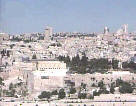
Hillel Fendel Old, New Jerusalem Neighborhoods
Jerusalem was named Israel's capital, as it had been during King David's time, after the War of Independence in 1948-9. During and prior to the war, there had been talk of internationalizing the Old City and environs, but the plan was never implemented due to opposition from both the Jewish and Arab parties Alongside Israel's capital in the western half of the city was eastern Jerusalem, annexed by Jordan in 1950; a wall and barbed wire divided the city in two. By 1967, the population of Jewish Jerusalem had grown to 260,000. Among its most famous neighborhoods were then Me’ah She’arim, Rehavia, Emek Refaim/German Colony, Geulah, Givat Sha’ul, Beit HaKerem, Kiryat Moshe and Talpiyot.
Other notable neighborhoods include Ein Kerem, Katamon, Yemin Moshe, Nahlaot, Romema and Machaneh Yehuda, and the newer Har Nof and Bayit V’gan.
The Six Day War in 1967 marked Israel's successful military response to the deployment of several Arab national military forces threatening to “drive the Jews into the sea.” The war saw the Old City of Jerusalem come under Jewish control for the first time since the destruction of the Second Temple 1,900 years before. Together with the Old City, Israel regained all of the area west of the Jordan River, known as Judea and Samaria.
Israel then expanded the borders of its historic capital, and built in its old-new areas the following neighborhoods:
* Ramat Eshkol (the first to be built), French Hill, and Sanhedria Murchevet, all not far from the center of town;
* Ramot (population: approximately 40,000), Ramat Shlomo (18,000), N’vei Yaakov (a recreation of the neighborhood that existed there before 1948; 20,000 people), Pisgat Ze’ev (42,000), and the Atarot industrial zone in the north;
* Gilo (population: 40,000), East Talpiyot (15,000), and Har Homa (11,000) in the southeast;
* Mt. Scopus and Mt. of Olives to the east.
Within 13 years after the Six Day War, the population of Jerusalem had increased by well over 55%, growing to nearly 410,000. It continued growing at a fast clip: In 1990, there were over 524,000 people, and 657,000 in the year 2000. The current population is close to 780,000.
The newly-approved 1,600 units to be built in Ramat Shlomo are slated to fill some of the area between Ramat Shlomo and Ramat Eshkol/Sanhedria.
No comments:
Post a Comment